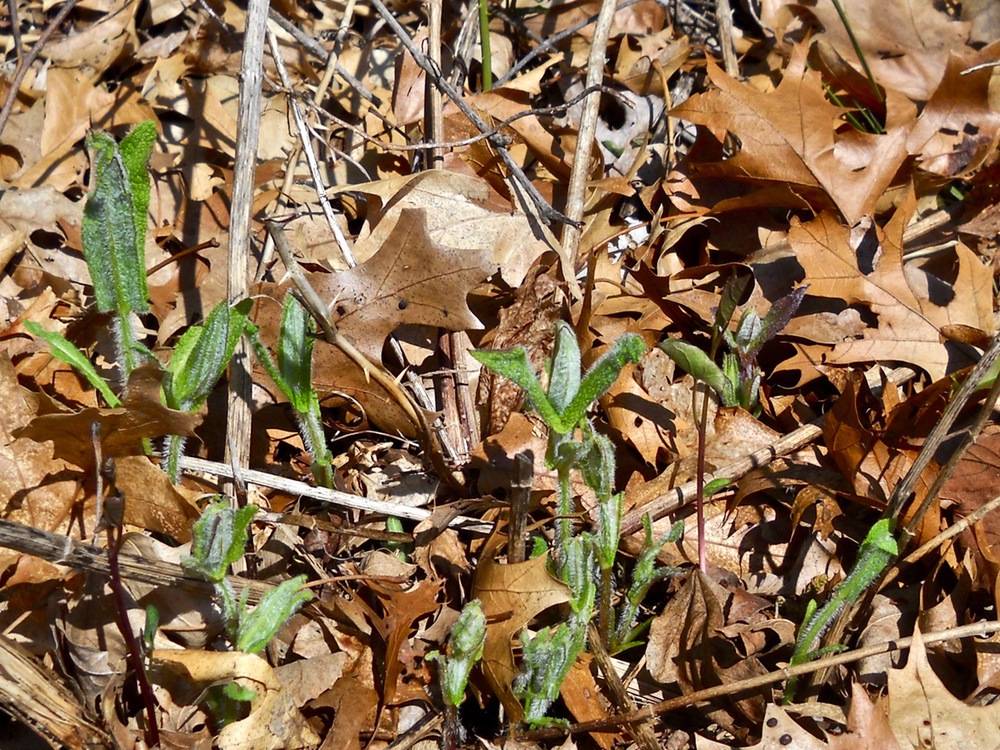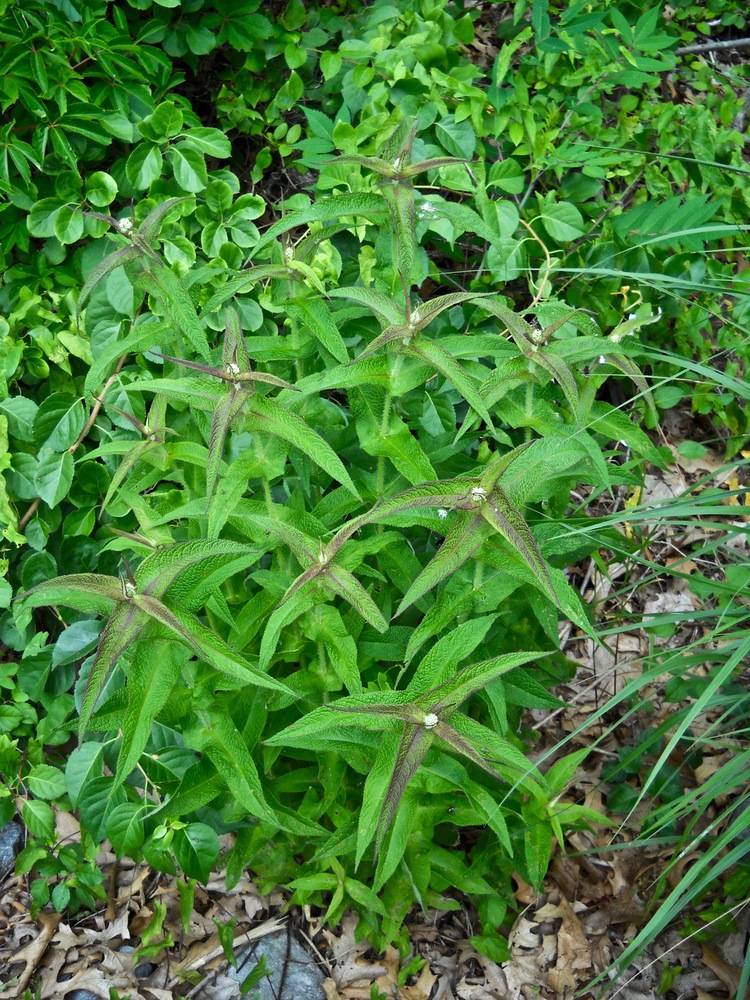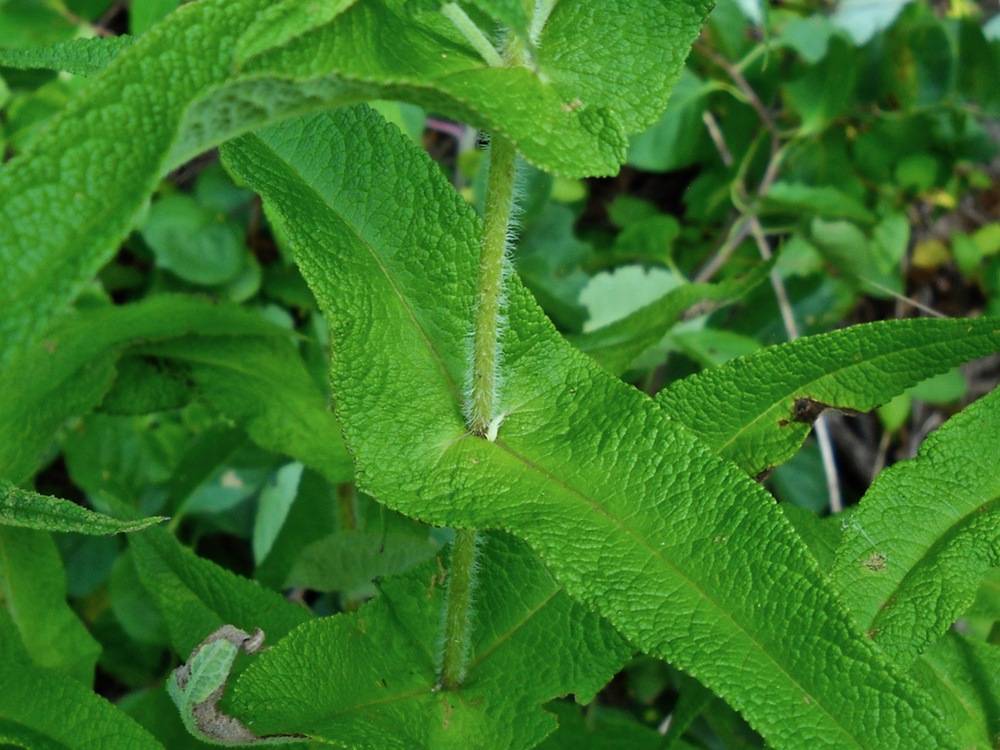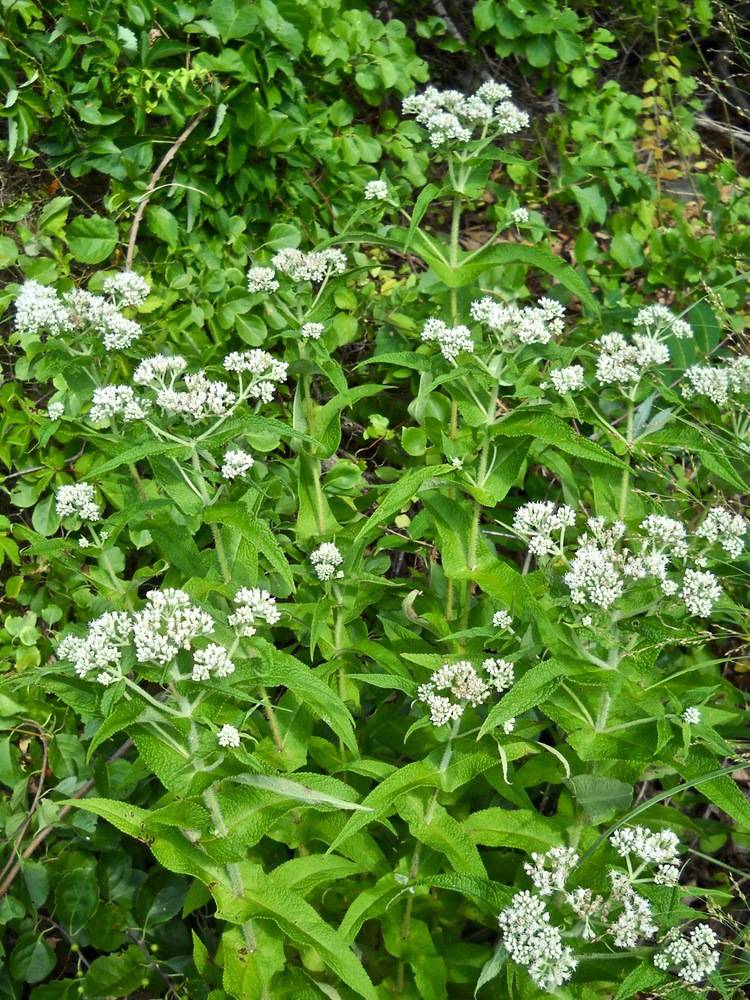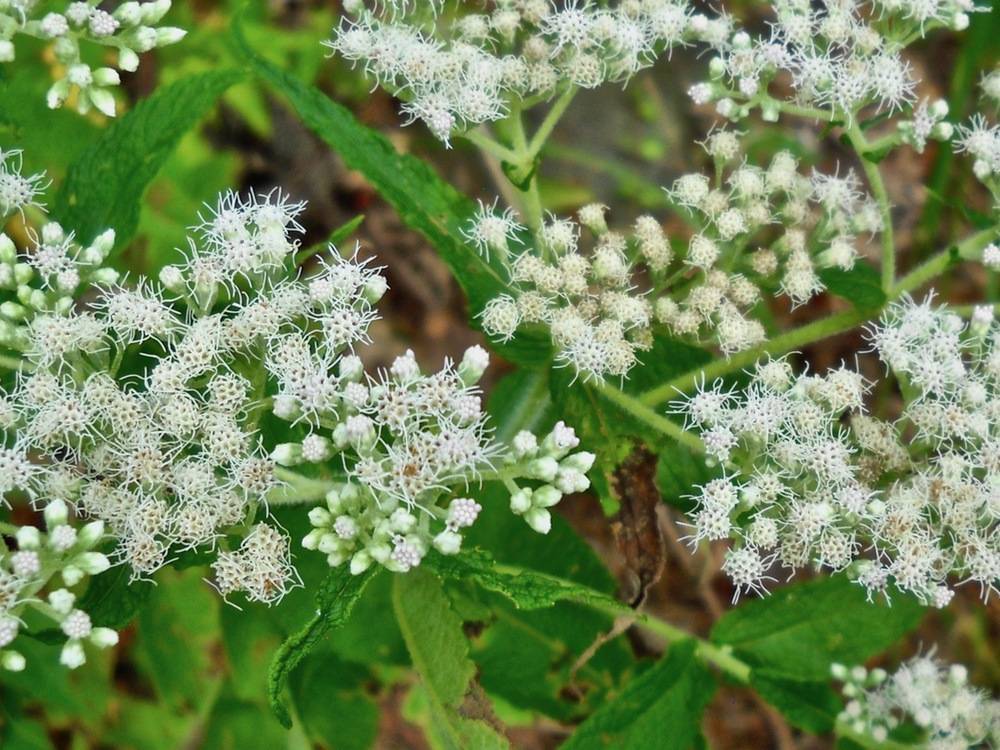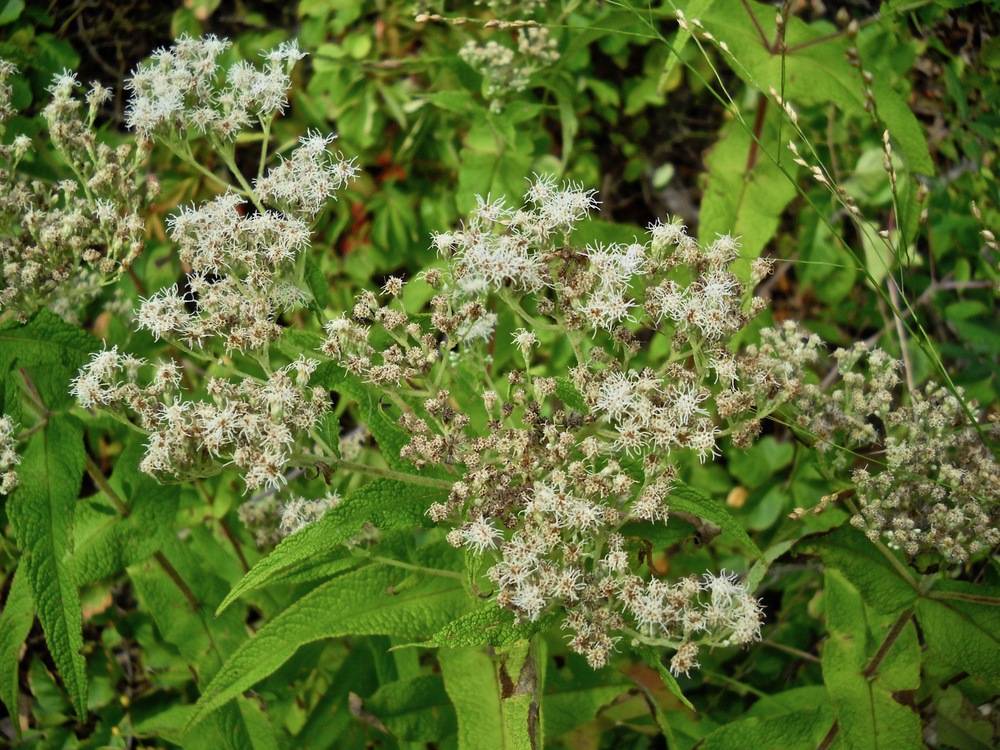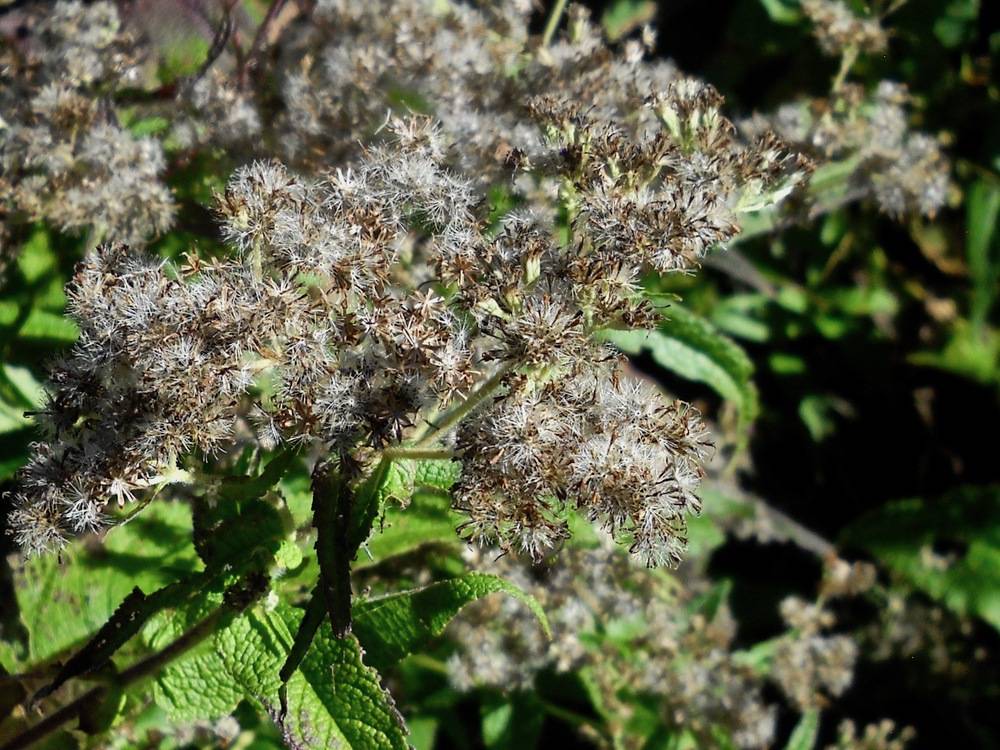boneset thoroughwort
Boneset thoroughwort is a perennial forb that is indigenous to Eastern North America, ranging from Nova Scotia to Florida, and extending as far west as Nebraska. This member of the aster family (e.g. daisy, dandelion, goldenrod, sunflower) prefers moist conditions and is never far from poorly drained soil, or wetlands like marshes or edges of rivers.
At Salter Grove, a small clump grows along the Marsh Trail above the high tide line north of trail marker M6, and a more substantial patch grows south of Trail Marker A8 at the foot of Audubon field where lawn gives way to marsh vegetation.
Very deeply set veins cause the long and narrow leaves to look wrinkled. Pairs of opposite leaves clasp the stem and appear to be fused into a single leaf pierced by the hairy stem. Its species name perfoliatum refers to this very illusion.
Unlike the other members of the aster family, boneset thoroughwort usually has fewer than 15 florets in each of its flower heads. The white style extends above the corolla and is very distinctive in being long and bifurcated. The easily accessible nectar in the wide open corollas attracts the usual bees, beetles, butterflies, and wasps as well as some unusual species.
Native Americans used all parts of boneset thoroughwort to produce an impressive array of remedies. It was used as a tonic and laxative, and to induce sweating, urination or vomiting. Infusions of leaves and stems were taken to alleviate chills, fevers, and stomach pains. Poultices of leaves were used to alleviate hemorrhoids or headaches. Decoctions or infusions of the roots were used to treat pneumonia, typhoid, snake bites, and lesions caused by venereal diseases. Rather than being effective in healing broken bones, its name comes form its value in treating colds and flus, which used to be called "break-bone fevers".
Boneset thoroughwort was considered a very valuable plant in a medical publication by a physician in 1854. It received official recognition of sorts since it was listed in the official U.S. Pharmacopoiea for almost 100 years, and then in the National Formulary from 1926 to 1950. It is probably the most extensively used medicinal plant in the United States from colonial times onwards.
For more information:
https://gobotany.nativeplanttrust.org/species/eupatorium/perfoliatum/
https://www.friendsofthewildflowergarden.org/pages/plants/boneset.html
https://www.illinoiswildflowers.info/prairie/plantx/cm_boneset.htm
http://naeb.brit.org/uses/search/?string=Eupatorium+perfoliatum
https://www.henriettes-herb.com/eclectic/king1854/eupatorium-perf.html
Coon, N. (1979). Using Plants for Healing. Rodale Press. p. 108.
Millspaugh, C.F. (1974). American Medicinal Plants. Dover Publications, Inc. pp. 312-316. (Original work published in 1892)
Seymour, T. (2020). Foraging New England: Edible Wild Food and Medicinal Plants from Maine to the Adirondacks to Long Island Sound. Falcon Guides. pp. 153-154.

